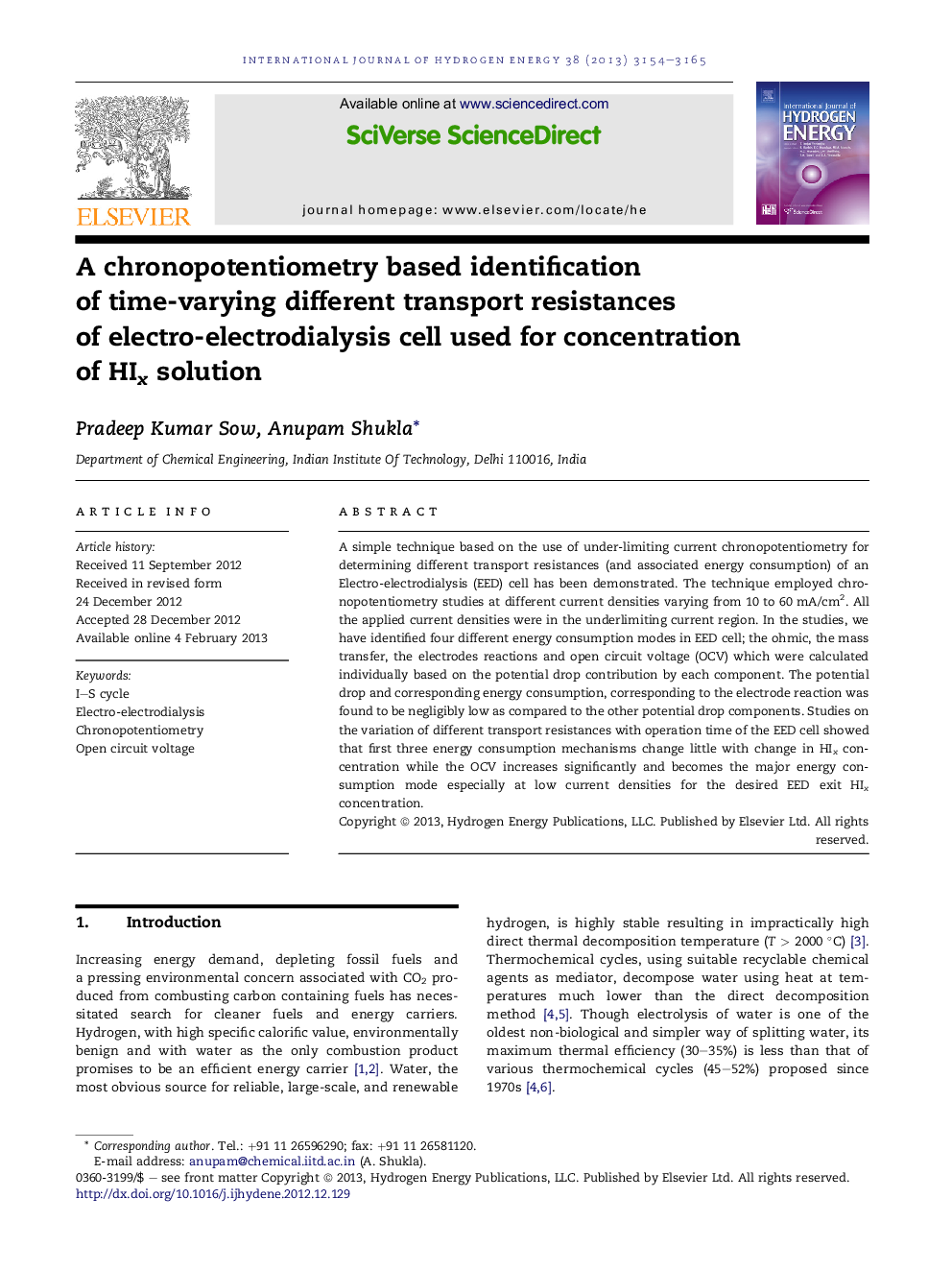| Article ID | Journal | Published Year | Pages | File Type |
|---|---|---|---|---|
| 1275730 | International Journal of Hydrogen Energy | 2013 | 12 Pages |
A simple technique based on the use of under-limiting current chronopotentiometry for determining different transport resistances (and associated energy consumption) of an Electro-electrodialysis (EED) cell has been demonstrated. The technique employed chronopotentiometry studies at different current densities varying from 10 to 60 mA/cm2. All the applied current densities were in the underlimiting current region. In the studies, we have identified four different energy consumption modes in EED cell; the ohmic, the mass transfer, the electrodes reactions and open circuit voltage (OCV) which were calculated individually based on the potential drop contribution by each component. The potential drop and corresponding energy consumption, corresponding to the electrode reaction was found to be negligibly low as compared to the other potential drop components. Studies on the variation of different transport resistances with operation time of the EED cell showed that first three energy consumption mechanisms change little with change in HIx concentration while the OCV increases significantly and becomes the major energy consumption mode especially at low current densities for the desired EED exit HIx concentration.
Graphical abstractA schematic of EED cell's cross-section along with mass transport processes at the electrodes and at the membrane.Figure optionsDownload full-size imageDownload as PowerPoint slideHighlights► Chronopotentiometric analysis of overpotentials of electro-electrodialysis cell. ► Increase in linear flow velocity decreased concentration overpotential. ► Open circuit voltage increased with time of operation. ► Transport resistances varied little with time of operation.
